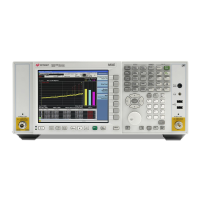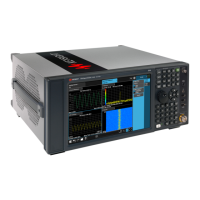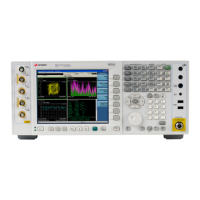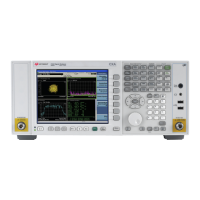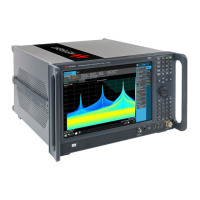17
SCPI Programming Fundamentals
SCPI Language Basics
Creating Valid Commands
Commands are not case-sensitive, and there are often many different ways of writing a particular command. These are
examples of valid commands for a given command syntax:
Special Characters in Commands
Command Syntax Sample Valid Commands
:[SENSe:]BANDwidth[:RESolution] <freq> The following sample commands are all identical. They all cause the same
result.
• :Sense:Band:Res 1700
• :BANDWIDTH:RESOLUTION 1.7e3
• :sens:band 1.7KHZ
• :SENS:band 1.7E3Hz
• :band 1.7kHz
• :bandwidth:RES 1.7e3Hz
:MEASure:SPECtrum[n]? • :MEAS:SPEC?
• :Meas:spec?
• :meas:spec3?
The number 3 in the last meas example causes it to return different results
than the commands above it. See the command description for more
information.
[:SENSe]:DETector[:FUNCtion]
NEGative|POSitive|SAMPle
• :DET:FUNC neg
• :Detector:Func Pos
:INITiate:CONTinuous ON|OFF|1|0 The sample commands below are identical.
• :INIT:CONT ON
• :init:continuous 1
Special Character Meaning Example
| A vertical stroke between parameters indicates
alternative choices. The effect of the command is
different depending on which parameter is selected.
Command: TRIGger:SOURce EXTernal|INTernal|LINE
The choices are external, internal, and line.
Ex: TRIG:SOURCE INT
is one possible command choice.
| A vertical stroke between keywords indicates
identical effects exist for both keywords. The
command functions the same for either keyword. Only
one of these keywords is used at a time.
Command: SENSe:BANDwidth|BWIDth:OFFSet
Two identical commands are:
Ex1: SENSE:BWIDTH:OFFSET
Ex2: SENSE:BAND:OFFSET
[] keywords in square brackets are optional when
composing the command. These implied keywords will
be executed even if they are omitted.
Command: [SENSe:]BANDwidth[:RESolution]:AUTO
The following commands are all valid and have identical effects:
Ex1: bandwidth:auto
Ex2: band:resolution:auto
Ex3: sense:bandwidth:auto
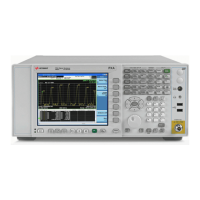
